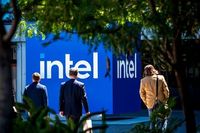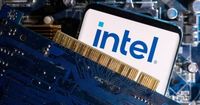The Trump administration is reportedly in advanced talks to acquire a roughly 10% stake in Intel, a move that could make the U.S. government the largest shareholder in the embattled American chipmaker. The proposed deal, first reported by Bloomberg and confirmed by several White House sources, would see the federal government convert some or all of Intel’s $10.9 billion in grants—awarded under the bipartisan Chips and Science Act—into equity. As of August 18, 2025, Intel’s market value hovered around $103.8 billion, meaning a 10% stake would be worth just over $10 billion.
This potential investment marks a dramatic shift in the government’s approach to domestic semiconductor manufacturing and comes at a critical juncture for Intel. The company, once an undisputed leader in the industry, has fallen behind rivals such as Nvidia in the global race for AI chip supremacy. According to Quartz, Intel’s struggles have prompted significant cost-cutting measures, including plans to lay off 20% of its workforce and a strategic pivot toward building new manufacturing hubs in the U.S.—most notably a massive factory complex in Ohio.
The Chips and Science Act, signed into law by President Joe Biden in 2022, was designed to bolster America’s semiconductor industry and reduce reliance on foreign suppliers. Intel emerged as the largest beneficiary, with grants earmarked for both commercial and military chip production. However, the company’s recent performance has raised questions about its ability to deliver on these ambitious projects. As reported by FOX Business, Intel’s stock price slipped 3.66% on August 18, 2025, though it has gained 18% year-to-date, buoyed in part by speculation about the government’s potential stake.
The saga took an unexpected turn earlier this month when President Donald Trump publicly demanded the resignation of Intel’s new CEO, Lip-Bu Tan, citing alleged conflicts stemming from Tan’s business ties to China. On August 7, Trump posted on social media, “The CEO of INTEL is highly CONFLICTED and must resign, immediately. There is no other solution to this problem. Thank you for your attention to this problem!” Tan, who took the helm at Intel in March 2025, responded by defending his record in a letter to employees and subsequently meeting with Trump and key cabinet members at the White House.
Following the meeting, Trump appeared to soften his stance, describing the discussion as “very interesting” and praising Tan’s personal story. “I met with Mr. Lip-Bu Tan, of Intel, along with Secretary of Commerce, Howard Lutnick, and Secretary of the Treasury, Scott Bessent. The meeting was a very interesting one. His success and rise is an amazing story. Mr. Tan and my Cabinet members are going to spend time together and bring suggestions to me during the next week,” Trump wrote on Truth Social, according to FOX Business.
The proposed government stake in Intel would not necessarily mean a fresh infusion of cash for the company. Instead, as explained by Quartz, it could accelerate the disbursement of already-promised Chips Act funds, giving Intel quicker access to capital as it races to complete its Ohio manufacturing hub. The Ohio project, intended to position the U.S. as a viable competitor to global giants like TSMC, has faced delays and scaled-back ambitions under Tan’s leadership. Analysts cited by Bloomberg argue that federal backing could provide Intel with much-needed breathing room to revive its loss-making foundry business, but warn that the company’s weak product roadmap and trouble attracting new customers remain serious headwinds.
The Trump administration’s intervention in the semiconductor sector is not limited to Intel. Earlier this month, the government announced deals requiring Nvidia and Advanced Micro Devices to pay 15% of their revenues from sales in China to the U.S. Treasury. Trump has also pushed for multibillion-dollar partnerships in rare earth minerals, including an arrangement with MP Materials to secure critical supply chains, as reported by Bloomberg. These moves reflect a broader strategy to shore up national security and reassert American leadership in advanced manufacturing.
Industry observers have been quick to weigh in on the administration’s bold economic maneuvers. Former Chrysler and Home Depot CEO Bob Nardelli told FOX Business that the potential Intel investment is “another proof-positive example of how President Trump has really refined the art of the deal. It’s just amazing what he has done in reshaping the global economy.” Still, not everyone is convinced that government ownership is the right solution. Some analysts worry that a direct federal stake could complicate Intel’s turnaround efforts or put the company at odds with the administration’s push for rapid domestic expansion.
Intel’s leadership shakeup in late 2024, which saw former CEO Pat Gelsinger replaced after failing to engineer a turnaround, underscores the company’s precarious position. Gelsinger had previously secured nearly $8 billion in subsidies to build new factories in Ohio and other states, but Tan has since slowed construction, opting to align new facilities with customer demand. This pragmatic approach, while fiscally cautious, may clash with the government’s desire for swift action to counter foreign competition.
Meanwhile, Trump’s policy arsenal has expanded to include tariffs and targeted incentives. Earlier in August, he announced a new 100% tariff on semiconductor imports, but with a significant carve-out for U.S. companies committing to major domestic investments—Intel among them. The company has pledged to spend $100 billion on U.S. projects over the next five years, a promise that could help it sidestep the steep import taxes and further ingratiate itself with policymakers seeking to boost American industry.
Despite the uncertainty, the market has responded with cautious optimism. Intel shares soared 24% in the week following initial reports of a government investment—its best weekly performance since January 2000, according to Dow Jones Market Data cited by FOX Business. The prospect of federal backing, coupled with ongoing restructuring efforts under Tan, has given investors hope that the company can regain its competitive edge.
As of this writing, neither Intel nor the White House has issued an official comment on the status of the negotiations. However, the high-stakes talks underscore the administration’s willingness to take unprecedented steps in pursuit of economic and national security objectives. With the future of American chipmaking hanging in the balance, all eyes are on Washington and Silicon Valley as the next chapter in this unfolding drama draws near.
For now, the intersection of politics, technology, and global competition has put Intel—and the U.S. semiconductor industry—squarely in the spotlight, with the outcome poised to shape not only the company’s fortunes but the nation’s technological trajectory for years to come.


